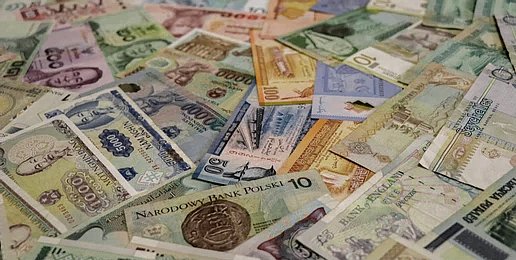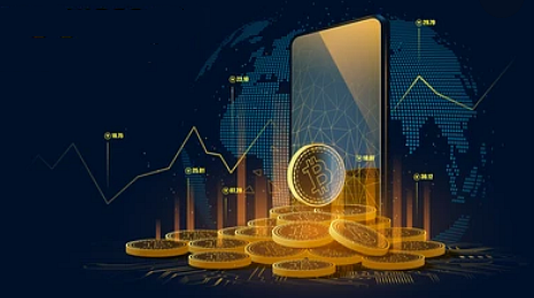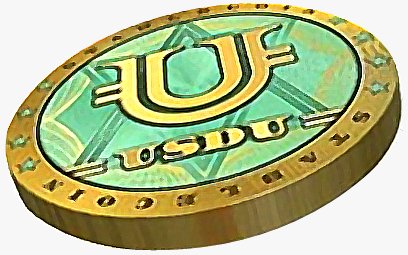Accredited InvestorsAltcoinAnatoli UnitskyAnti-Money Laundering (AML) In CryptoAPIArbitrageArtCoin TokenArticle DirectoryASICAuction Terminology GlossaryBasics of Stock Market InvestingBear MarketBest Crypto Payment Provider In the WorldBitcoinBlockchainBlockchain ConfirmationBlockchain Consensus MechanismBlockchain ForkBlockchain GlossaryBored Ape Yacht ClubBuild a Business That OutperformsBull MarketBuying SkyWay SharesByzantine Fault Tolerance (BFT) ExplainedCasascius CoinCentral Bank Digital Currency (CBDC)Centralized Crypto ExchangeCoinCoinsetCold WalletCollateralCommodity Futures Trading Commission (CFTC)Cross-Chain TechnologyCRUCrypto ExchangeCrypto GlossaryCrypto JokesCrypto Terms to KnowCrypto TickerCryptocurrencyCryptographyCryptojackingCryptounit BlockchainCryptounit GlossaryCryptounit ProgramdApp (Decentralized Application)Dead CoinDecentralized Exchange (DEX)Decentralized Finance (DeFi)Difference Between Bitcoin and EthereumDifferent Ways of Investing MoneyDigital CurrencyDistributed LedgerDo Your Own Research (DYOR)Dollar Cost Averaging (DCA)Dow Jones Industrial Average (DJIA)EncryptionERC-20ERC-721EthereumEvoScentFear Of Missing Out (FOMO)Fear, Uncertainty and Doubt (FUD)Fiat MoneyFNT Fintech CompanyGenesis BlockGlobal Unit PayGlossary of Banking TermsGlossary of Business TermsGlossary of Financial TermsHalvingHODLHot WalletHow Do I Start InvestingHow Rich is Satoshi Nakamoto?How to Create a BlockchainHow to Find Private InvestorsHow to Get Into FintechHow to Program Smart ContractsI Am Thrilled to Be a Part of This Global ProjectInitial Coin Offering (ICO)Initial Public Offering (IPO)Initial Token Offering (ITO)Innovation Basalt TechnologyInnovative Transportation TechnologiesInternational Bank Account Number (IBAN)Investing in Gold Mining StocksInvesting in Gold MiningJagerJoy of Missing Out (JOMO)Know Your Customer (KYC)LedgerLiquidity in CryptocurrencyMaker and Taker Fees in Crypto TradingMarket Capitalization (Market Cap)Meme CoinMetal Credit CardMetaMaskMillenials Now Have Access to Generational WealthMy Best Investment EverNew Digital EvolutionNFT GlossaryOff-Chain TransactionsOn-Chain TransactionsOpen Edition NFTPeer-to-Peer (P2P)Personal Loan GlossaryProbably the Best STO on the MarketProof of Stake (PoS)Real Estate Glossary of TermsReal Estate Investing GlossaryRebase TokenSecurities and Exchange Commission (SEC)Security Token ExchangesSecurity Token Offering (STO)Soulbound Decentralized Identities for Security TokensSoulbound ID Launch by Stobox Proves a SuccessSoulbound TokensStoboxStock Market GlossaryTestimonialsTether Platform and Token (USDT)UnitEx ExchangeUnitsky String TechnologiesUNTBUSDUValidatorWe Started Investing When We Were 25What are Blue Chip NFT?What are Blue Chip Stocks?What are Crypto Assets?What are Crypto Smart Contracts?What are CryptoPunks NFT?What are Digital Assets?What are Digital Collectibles?What are Gas Fees?What are Gas Wars?What are Hashmasks?What are Non Fungible Tokens?What are Non-Sufficient Funds (NSF)?What are Soulbound Tokens (SBT)?What are Stablecoins in Crypto?What are Transactions Per Second (TPS)?What are Utility NFTs?What are Utility Tokens?What Does Burning Crypto Mean?What Does Diamond Hands Mean?What Does Paper Hands Mean?What Does To The Moon Mean?What Does WAGMI Mean?What Happened to Satoshi Nakamoto?What is a 51% Attack?What is a Baby Boomer?What is a Backlink?What is a Banner?What is a Barcode?What is a Bid-Ask Spread in Crypto?What is a Block in Blockchain?What is a Block Reward?What is a Blockchain Address?What is a Blockchain Node?What is a Blockchain Oracle?What is a Blog?What is a Bond?What is a Bot?What is a Broker?What is a Business Accelerator?What is a Cash Cow?What is a Commercial Bank?What is a Commodity?What is a Con?What is a Credit?What is a Credit Limit?What is a Credit Rating?What is a Crypto Airdrop?What is a Crypto Bridge?What is a Crypto Scam?What is a Crypto Token?What is a Crypto Wallet?What is a Crypto Whale?What is a Crypto Winter?What is a Cryptocurrency Public Ledger?What is a Cryptocurrency Roadmap?What is a DAO?What is a Dark Pool?What is a Day Trader?What is a Dead Cat Bounce?What is a Default?What is a Derivative?What is a Digital Credit Card?What is a Fiscal Quarter?What is a Fungible Token?What is a Governance Token?What is a Grace Period?What is a Hard Fork?What is a Hot Wallet?What is a Hybrid Blockchain?What is a Hybrid PoW/PoS?What is a Joint Account?What is a Market Cap?What is a Merkle Tree in Blockchain?What is a Mining Farm?What is a Nonce? What is a PFP NFT?What is a POS System?What is a Prepaid Card?What is a Private Blockchain?What is a Private Key?What is a Public Blockchain?What is a Public Key?What is a Reserve Currency?What is a Ring Signature?What is a Routing Number?What is a Rug Pull in Crypto?What is a Safe Deposit Box?What is a Satoshi?What is a Security Token?What is a Seed Phrase?What is a Shitcoin?What is a Sidechain?What is a Soft Fork?What is a Spot Market?What is a State Bank?What is a SWIFT Code?What is a Tax Identification Number (TIN)?What is a Time Deposit?What is a Transaction Account?What is a Variable Interest Rate?What is a Virtual Assistant (VA)?What is a Virtual Card?What is a Virtual Currency?What is a Visa Card?What is a Whitelist in Crypto?What is a Whitepaper?What is Accounts Payable (AP)?What is AMA in Crypto?What is Amortization?What is an Accrual?What is an ACH Transfer?What is an Actuary?What is an Addendum?What is an Algorithm?What is an Angel Investor?What is an Annuity?What is an Asset?What is an ATM?What is an Atomic Swap?What is an Audit?What is an Avatar?What is an EIN?What is an Embargo?What is an Entrepreneur?What is an IDO (Initial Dex Offering)?What is an Interest Rate?What is an Internet cookie?What is an Investment Bank?What is an NFT Drop?What is an NFT Floor Price?What is an Ommer Block?What is an Orphan Block?What is an Outstanding Check?What is an Overdraft?What is Artificial Intelligence (AI)?What is B2B (Business-to-Business)?What is B2G (Business-to-Government)?What is Bartering?What is Bitcoin Dominance?What is Bitcoin Pizza Day?What is Blockchain Immutability?What is Blockchain Used For?What is BRICS?What is Business-to-Consumer (B2C)?What is C2C (Customer to Customer)?What is Capitalism?What is Catfishing?What is CFD Trading?What is Check Kiting?What is Cloud Mining?What is Communism?What is Content Marketing?What is Decentralization in Blockchain?What is DeFi in Crypto?What is Delisting?What is Depreciation?What is Digital Marketing?What is Diversification?What is Double Spending?What is Dumb Money?What is Dumping?What is Earnings Per Share (EPS)?What is Economics?What is Email Marketing?What is Equity?What is Etherscan?What is Fintech?What is Foreign currency?What is Forex?What is Fundamental Analysis (FA)?What is GameFi?What is Generative Art NFT?What is Gwei?What is Hard Currency?What is Hash Rate?What is Hashing in Blockchain?What is Inflation?What is Initial Game Offering (IGO)?What is Interest?What is Interest Income?What is Mainnet?What is Mastercard?What is Metaverse in Crypto?What is Mining in Cryptocurrency?What is Minting NFT?What is Mobile Banking?What is Money Laundering?What is NFT Alpha?What is NFT Metadata?What is NFT Rarity?What is NGMI Meaning?What is Nominal Interest Rate?What is Online Banking?What is Open-End Credit?What is OpenSea NFT Marketplace?What is Personal Identification Number (PIN)?What is Play-to-Earn?What is Polygon?What is Proof of Authority (PoA)?What is Proof of Work (PoW)?What is Public Key Cryptography?What is Pump and Dump?What is Quantum Computing?What is Refinancing?What is Retail Banking?What is Ripple?What is Sharding?What is Slippage in Crypto?What is Smart Money?What is Solvency?What is Soulbound ID?What is SSL?What is Staking in Cryptocurrency?What is Technical Analysis (TA)?What is Testnet?What is the Ask Price?What is the Better Business Bureau (BBB)?What is the Bid Price?What is the Dark Web?What is the InterPlanetary File System (IPFS)?What is the Gold Standard?What is the Lightning Network?What is the Prime Rate?What is the Sandbox?What is the Secondary Market?What is the World Bank?What is Tier 1 Capital?What is Tokenomics?What is TRC-20?What is Universal Banking?What is Unspent Transaction Output (UTXO)?What is Usury?What is Volatility in Crypto?What is Wash Trading?What is Web3?What is Whisper?What is XRP?What is Zero-Knowledge Proof (ZKP)?Who is Beeple?Who is Satoshi Nakamoto?Who is Vitalik Buterin?Why Tokenization is a Safe HavenWhy You Should Try Your Hand at Trading
Fiat Money
- Home
- Crypto Glossary
- Fiat Money
Presently, there are distinct categories of currencies, with some being backed by a government, like fiat currencies, while others are decentralized and supported by blockchain technology, like cryptocurrencies.

This article will explore the concept of fiat currency, including its advantages and disadvantages, and how it differs from other types of currencies.
What is Fiat Money?
Fiat money is a type of currency issued by a government that is not backed by a tangible commodity such as gold or silver but by the government's authority. The value of fiat money depends on the supply and demand of the currency as well as the stability of the issuing government. Most of today's paper currencies, such as the US dollar, the euro, and other major world currencies, are fiat currencies.
Besides government regulation and approval, the fundamental reason why fiat money is considered valuable and useful in our society is because of a collective belief. In other words, the fiat value is largely dependent on a social agreement that it has purchasing power and can be used as a medium of exchange.
Therefore, the acceptance of fiat money relies heavily on a government decree and the expectation that it will retain its value over time. If either the social belief or the government decree is undermined, the true value of the currency as a means of payment can quickly and dramatically decrease.
Since fiat money is not tied to actual assets, like a national hoard of gold or silver, it is susceptible to inflation and, in extreme cases, may become worthless. When people lose confidence in a country's currency, the money loses its value.
This is different from a gold-backed currency, which has intrinsic value due to its demand in the manufacturing of electrical equipment, computers, and aerospace vehicles.
The History of Fiat Money
Throughout history, various forms of money have been used as a medium of exchange for goods and services. In ancient times, people traded in goods such as precious metals and livestock, which served as a form of currency. As civilizations developed, currencies made of precious metals such as gold and silver became popular for their durability and scarcity.
However, as economies grew more complex and trade expanded, these forms of currency became impractical due to their weight and storage requirements. The use of paper money as a substitute for precious metals started in China during the Tang Dynasty, where the government issued paper money to replace the heavy metal coins.
During the 17th century, the use of paper money became more widespread in Europe, with many countries adopting paper currency as a more practical means of exchange. However, these paper currencies were still backed by precious metals such as gold and silver, which meant that their value was tied to the availability of these metals.
The emergence of fiat money began in the 20th century with the abandonment of the gold standard. In 1971, the US government abandoned the gold standard, which meant that the US dollar was no longer backed by gold. Instead, the US dollar became a fiat currency, backed only by the government's promise to pay its debts and the faith of the public in the government's ability to maintain its value.
Other countries followed suit, and fiat currencies became the norm around the world. Today, most currencies, including the US dollar, the euro, and the Japanese yen, are fiat currencies that are not backed by precious metals.
The use of fiat money has allowed governments to have greater control over their currencies, making it easier to manage the economy by regulating the supply of money. However, the reliance on government-backed currencies has also created the potential for inflation, which can erode the value of fiat money over time.
Despite this, the use of fiat money has become an essential part of the global economy, with individuals and businesses relying on it to conduct transactions on a daily basis. The history of fiat money has shown that it has been a valuable development in the evolution of currency, and its future role in the economy is likely to remain significant for many years to come.
Pros of Fiat Money
Fiat money, being a currency that is not a scarce or fixed resource like gold, gives central banks greater influence over its supply. This allows them to regulate economic factors such as credit availability, liquidity, and interest rates.
Fiat money can be considered a good currency if it fulfills the functions that a country's economy requires of its monetary unit, such as storing value, providing a numerical account, and enabling commerce. Additionally, fiat money is less expensive to produce than a currency that is directly linked to a commodity.
Cons of Fiat Money
A currency that is tied to gold is often more stable than fiat money due to the limited amount of gold available. In contrast, the infinite supply of fiat money creates a higher potential for the creation of bubbles and inflation risk, making it less reliable as a means of protecting the economy.
When a government has control over its currency supply, there is always a risk of hyperinflation. However, most modern countries have experienced only minor periods of inflation, and a persistent low level of inflation is generally viewed as beneficial for economic growth and investment. It motivates individuals to invest their money rather than letting it sit idle and lose value over time.
It is uncertain whether hyperinflation is solely the result of excessive printing of money. Throughout history, hyperinflation has occurred even when money was backed by precious metals. In current times, hyperinflation usually begins with a fundamental collapse in a country's production sector or political instability.
Alternative Forms of Currency to Fiat Money
Fiat money has been the most widely used form of currency for decades, but in recent years, various alternatives to fiat money have emerged. These alternatives vary in their structure, backing, and use cases. This chapter will explore some of the most popular alternatives to fiat money.
- Commodity Money - Commodity money is a type of currency that is backed by a physical commodity, such as gold or silver. In the past, commodity money was widely used, and its value was determined by the supply and demand of the underlying commodity. While commodity money is not commonly used in today's economy, some countries, such as China and Russia, have been increasing their gold reserves in recent years.
- Cryptocurrency - Cryptocurrency is a digital asset that uses cryptography to secure and verify transactions and control the creation of new units. Unlike fiat money, which is backed by a government, cryptocurrency is decentralized and not controlled by any single entity.
- Local Currencies - Local currencies are typically used within a particular region or community and are often created to support local businesses and promote economic growth. Examples of local currencies include the BerkShares in the Berkshires region of Massachusetts and the Bristol Pound in Bristol, UK.
- Bartering - Bartering is the exchange of goods or services without the use of money. While bartering is not a formal currency system, it is a common way of conducting transactions in some parts of the world, especially in rural areas.
- Stablecoins - Stablecoins are a type of cryptocurrency that is backed by a fiat currency or other assets, such as gold or real estate. The value of stablecoins is tied to the value of the underlying asset, which provides price stability and reduces the volatility of traditional cryptocurrencies.
- Central Bank Digital Currencies (CBDCs) - CBDCs are digital currencies that are issued and regulated by a central bank. Unlike traditional fiat money, which is backed by a government, CBDCs are backed by the central bank's assets. Some countries, including China and Sweden, are already testing CBDCs, and other countries are expected to follow suit in the coming years.
Related Articles

Cryptocurrency
Cryptocurrencies, like Bitcoin, Litecoin, and Ethereum, have gained popularity as alternative payment methods. It's important to understand the basics, risks, and how to safeguard your investment before converting to a digital currency.

What are Stablecoins in Crypto?
When it comes to cryptocurrencies, one cannot overlook their volatility. However, there is one type of cryptocurrency that is particularly designed to provide a stable price: stablecoins.

Blockchain
Blockchain is a continually growing digital database. A list like this is composed of numerous data blocks that are organized chronologically, linked, and protected by cryptographic proofs.
- Home
- Crypto Glossary
- Fiat Money